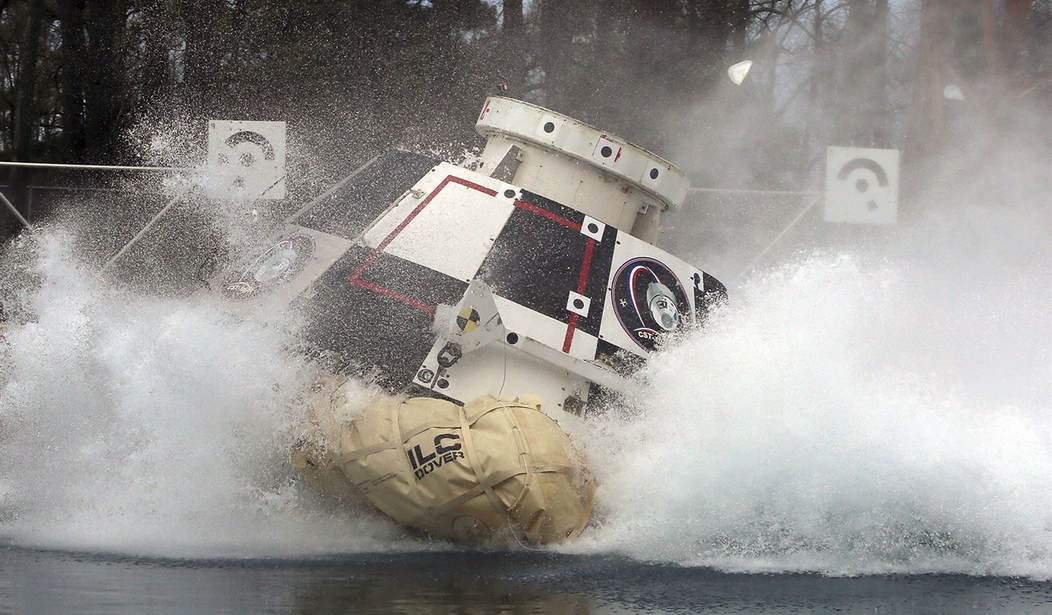After months of hemming and hawing, the die has been cast and NASA has decided the fate of Boeing's troubled Starliner spacecraft. NASA determined that the ship "does not meet the agency’s safety and performance requirements for human spaceflight." (Ya think?) As such, Starliner will be "ejected" from the ISS docking port and attempt a "safe, controlled autonomous re-entry" in the next couple of weeks. This will make room for Crew Dragon to access the docking bay and retrieve Butch Wilmore and Suni Williams and finally bring them home. That mission is currently projected to launch on or about September 24, but they still won't be able to return until early next year. Now the remaining question for Boeing is... can they stick the landing given the shape that their spacecraft is in? (NY Post)
Boeing’s troubled Starliner spacecraft will return to Earth uncrewed in the coming weeks to make room for SpaceX’s Crew Dragon, which NASA tapped to help bring two stranded astronauts home after issues with Starliner.
NASA said the Boeing craft, which suffered helium leaks and thruster failures in June, is expected to eject from the International Space Station and make a “safe, controlled autonomous re-entry” in early September.
The trip will be watched closely as the craft was originally meant to carry astronauts Butch Wilmore and Suni Williams home, with NASA opting against the trip due to the safety risks despite Boeing’s reassurance.
As with most of the press releases that have been put out related to this debacle since the mission launched in June, both NASA and Boeing are once again being rather light in terms of details. We were previously told that a software failure had prevented them from safely detaching Starliner from the ISS under its own power. Now they are using the word "eject" to describe how they plan to clear the docking bay for Crew Dragon. I suppose that could be a relatively meaningless shift in terminology, but it still seems important to know if Starliner is now capable of detaching and preparing for re-entry under its own power or whether NASA will need to almost literally "give it the boot" to get it out of the way.
Then comes the "autonomous re-entry," which was not part of the original mission plan. Reading between the lines, it appears that the dive back into Earth's atmosphere was the part of the plan that made NASA decide that the ship would not meet their safety and performance requirements. I was recently listening to an interview with a design engineer who previously worked at NASA and he was expressing concerns over the thrusters yet again. Without being able to conduct a full static-fire test of the thrusters, it's difficult to say with certainty that they will be able to configure Starliner correctly for re-entry. That's something they have to get exactly correct. If the capsule hits the atmosphere at too shallow or too steep of an angle, that's the end of the road for the vessel.
Of course, whether Starliner sets down in one piece or not doesn't really matter at this point. All that counts is getting the astronauts home alive. Once Crew Dragon finally brings Butch and Suni back (hopefully) safe and sound, what I would really like to see is some sort of final report from NASA about the lessons learned from this seemingly cursed mission. If anyone other than SpaceX is going to be flying missions to the ISS for NASA, all of the vessels should be compatible with the same type of spacesuit. Pre-launch safety and inspection protocols should be reviewed and rewritten as required. For example, if a helium leak is detected on your ship, be it ever so tiny, you don't launch, particularly if there is a crew onboard. NASA has quite a bit to prove if they wish to reestablish the trust of the American public in these matters. And Boeing obviously has far more to prove than NASA. At least for now, though, we seem to be back on track. We may not be out of the woods yet, but we can see a light on the horizon. It's time for SpaceX to step up to the plate and close the deal.








Join the conversation as a VIP Member